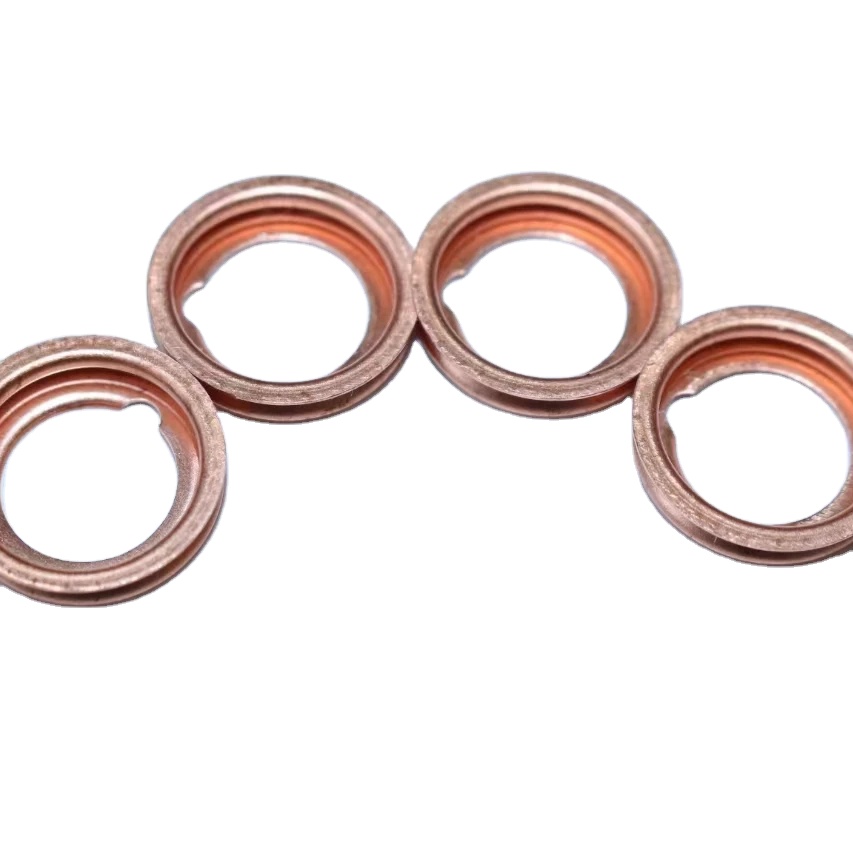Understanding Sump Crush Washers for Effective Fluid Management Solutions
Understanding Sump Crush Washers Essential Components in Fluid Systems
In modern engineering and fluid management, various components are essential for ensuring systems operate efficiently and safely. One such component is the sump crush washer, which plays a crucial role in maintaining the integrity of sealing applications, particularly in systems where fluids are involved. Understanding the function, application, and maintenance of sump crush washers can significantly enhance performance and longevity in various fluid systems.
What is a Sump Crush Washer?
A sump crush washer is a type of washer specifically designed to create a seal between two surfaces, preventing leaks of fluids. It is typically made from a soft material that can deform under pressure, allowing it to fill any gaps between mating surfaces. This property is particularly useful in applications where there might be irregularities or minor imperfections that could lead to leaks over time.
These washers are commonly utilized in oil sump applications, automotive settings, and hydraulic systems. They are available in various sizes and thicknesses, enabling engineers and technicians to choose the right washer for their specific needs. The design of these washers often incorporates a lip around the edge, which assists in maintaining seal integrity by compressing into the surrounding material when tightened.
Applications of Sump Crush Washers
Sump crush washers are extensively used in automotive engines, particularly in oil sump applications where they prevent oil leaks that could lead to serious mechanical failures. Without proper sealing provided by a crush washer, oil could seep out, resulting in lower oil levels that could damage engine components due to inadequate lubrication.
In hydraulic systems, sump crush washers are critical in preventing fluid leaks
. These systems often operate under high pressure, making proper sealing a priority. A failure to adequately seal can result in pressure drops, inefficiency, or total system failure.Additionally, these washers are found in plumbing applications where liquids are transported through various fittings. Ensuring that joints are sealed properly is crucial for maintaining system efficiency and preventing costly leaks or water damage.
sump crush washer

Choosing the Right Sump Crush Washer
Selecting the appropriate sump crush washer involves considering several factors, including the type of fluid being sealed, the pressure within the system, and the materials of the components being joined. For instance, in environments where corrosive fluids are used, it is important to choose washers made from materials resistant to deterioration, such as certain metals or specialized plastics.
The size of the washer is also critical; too small, and it may not provide adequate coverage, while too large can lead to difficulties in achieving a proper seal. Additionally, the thickness can affect the compression and deformation, hence influencing the effectiveness of the seal.
Maintenance and Replacement
Regular maintenance checks are essential to ensure that sump crush washers continue to perform effectively. Over time, with exposure to heat, pressure, and chemicals, these washers may wear out or lose their sealing properties. Routine inspections can identify signs of wear or deformation, prompting timely replacements.
When replacing a sump crush washer, it's vital to clean the surfaces of both components thoroughly to prevent contamination. Installation should also be conducted carefully, ensuring the washer is placed correctly and torqued to manufacturer specifications to avoid over-compression, which can lead to washer failure.
Conclusion
Sump crush washers may seem like small components, but their role in maintaining system integrity and preventing fluid leaks is invaluable. From automotive engines to hydraulic systems and plumbing applications, these washers are essential for ensuring efficiency and safety. By understanding their function and implementing proper selection and maintenance practices, engineers and technicians can significantly enhance the reliability and performance of fluid systems. Investing the time and resources into managing these small yet crucial components can lead to substantial benefits in operational efficiency and equipment longevity.
-
Oil Drain Plug Washer Reusable Types
News Aug.22,2025
-
Oil Drain Plug Replacement Guide
News Aug.22,2025
-
Heavy Duty Seal Waterproof Features
News Aug.22,2025
-
Engine Oil Seals Installation Guide
News Aug.22,2025
-
Seal Oil for Sale High Temperature Grade
News Aug.22,2025
-
Cassette Seal Compact Design
News Aug.22,2025
-
Simplifying Oil Changes: A Comprehensive Guide to Oil Drain Plugs and Their Variants
News Aug.04,2025
Products categories















